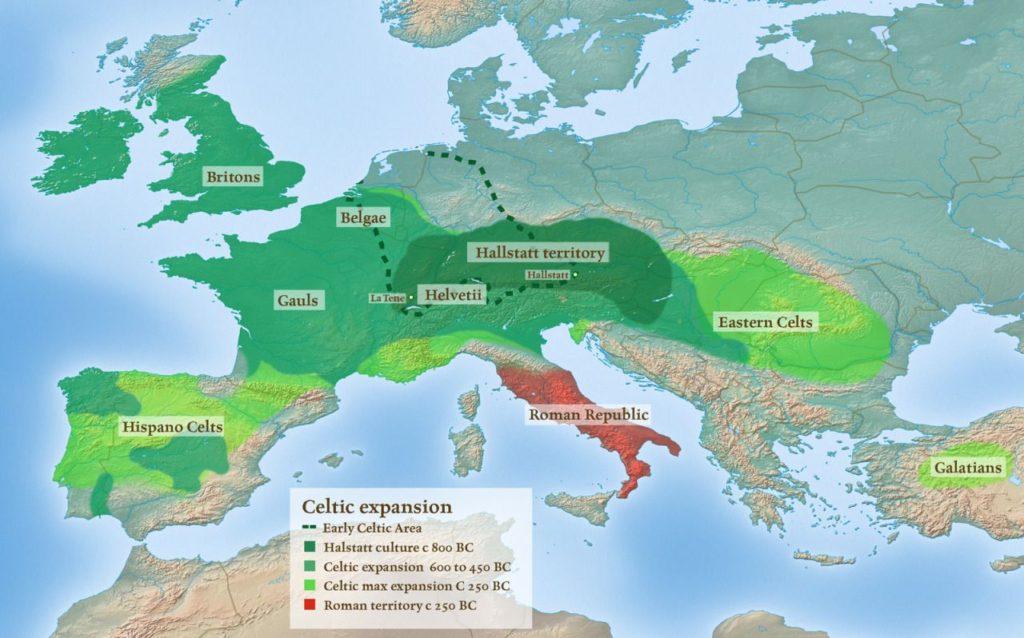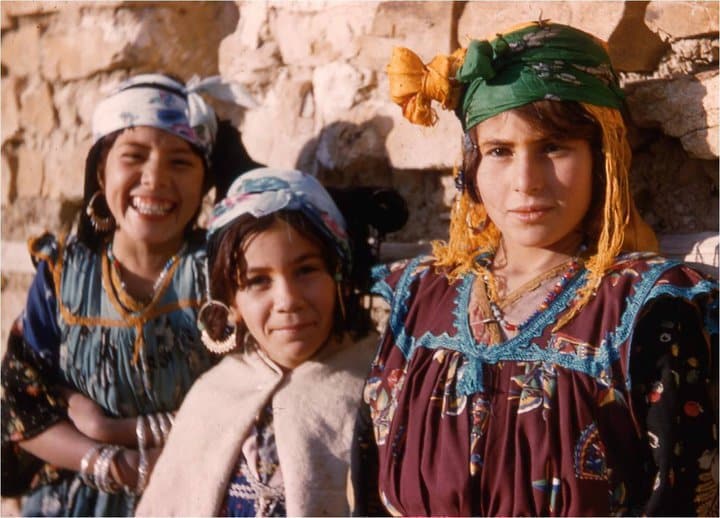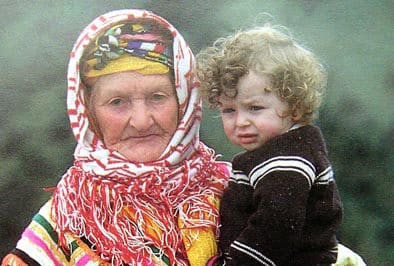Sometime at the end of the fourteenth, or it may have been in the early fifteenth century, a ship was wrecked on a spit of sand jutting out from the Moroccan Atlantic coast. The sole survivor scrambled ashore and fell into the hands of the Amazigh “Berbers” whose clan name was the Beni M’Touga, and who inhabited that part of the country. The Berbers spared his life, which was unusual clemency on their part as they had a hatred for all strangers.
The shipwrecked man who was a Scot, and whose name was either MacDougal or MacDowall (most likely the latter), was an expert in metalwork, settled down among the natives and taught them many useful arts, including working in metals. He lived for many years with this tribe, who venerated his superior knowledge to such an extent that on his death they raised a monument over his tomb, which is known and worshipped to this day as the shrine of “Sidi Magdool”.
During the course of the years, a seaport was built on the spit of sand where the shipwreck occurred, and this was named after him, but the name was gradually corrupted by Europeans into “Mogador”.
What was the reason for the unusual friendliness of these wild Berber tribesmen towards a shipwrecked sailor? One of the first steps towards amity between strangers is a knowledge of each other’s languages and that is what most probably saved MacDowall. You may wonder how he knew the Berber tongue! As he was an expert in metalwork, he was most likely a passenger on the shipwrecked vessel and not one of the crew, as his calling was not of very much use for employment in a wooden ship; therefore it was unlikely that he gained a knowledge of their language by previous contact with them as a sailor. Besides, the language of the sea-ports in thatpart of the world was Arabic, which is entirely different to the native Berber tongue known as “Shluh” .

The explanation may lie in the following extraordinary statement which was made by Colonel W.G. Macpherson of the Army Medical Corps. …….. “When I was in Morocco City in 1891. I met a Gaelic-speaking missionary doctor who had come out there and went into the interior, where Shluh is the language spoken in the Sous country, just as it is the language of the Cis-Atlas country. He told me that the words seemed familiar to him, and after listening to the natives speaking among themselves found they were speaking a Gaelic dialect, much of which he could follow. The medical missionary told me he recognized the Shluh language as Celtic.

Although he had no previous knowledge of it, and had no conception of its being allied to Gaelic, he found himself able to understand much of what was being said the first time he went among the tribes, solely on account of the resemblance of they language to his own Gaelic. This confirmed my own observations regarding the names of the Berber tribes, I myself, had come across, namely, the Beni M’Tir, the Beni M’Touga and the Beni M’Ghill is simply the Arabic for ‘children of’ and is tacked on by the Arabs to the M’ of the Berbers which means ‘sons of’, and is exactly the same as the Gaelic Mac or Mc. Hence the M’Tir, M’Touga and M’Ghill become in our country MacTiers, MacDougalls and MacGills.”
At the Pan-Celtic Congress held in Edinburgh in Sept. 1907, Dr. George Mackay read a paper on these remarkable experiences of the missionaries. It caused a sensation in the local press at the time but, as far as I can discover, no further investigations were made.
The shipwrecked man MacDowall was probably a Gaelic speaker. The fact that he and the Berbers understood each other may explain why he was not killed by them, and also that his name has similar to their clan name. This conjecture of mine may be very near the truth.

Apart from the fact that the Berber-Shluh language is a Gaelic dialect, the Berbers are a highly interesting people. The majority of them are a tall, white-skinned, fair haired race with blue or grey eyes, and Professor Hooten of Harvard the famous American Anthropologist did not hesitate to say that there were more “pure Nordics” in Barbary than in Germany.
Alan Houghton Brodick, in his book “North Africa”, p.20, mentions that in the countryside of Northern Morocco, “you are astonished at the number of men (and women for they often go unveiled) who might pass for Scots among a populaton that sometimes looks more northern than southern European”.
There is still another interesting point about these tribes. They live a clan life and are known by their clan names just as the Highlanders of our own country once lived. They have feuds among themselves and unite against a common enemy. They are essentially mountaineers, and that is probably the main reason why their language has been preserved, and why they are so independent.
The ancestors of the Beni M’Ghill furnished the contingents with which the Moors conquered Spain, and the Beni M’Touga was one of the clans who controlled the Atlas passes and levied toll upon all who passed.
The tribes have a high reputation for valour, and at one time were at war with all outsiders; yet it is said, and has been proved, that if you gain their confidence and friendship, they are as kind and hospitable as our own kith and kin.
Many theories have been put forward as to the origin of these peoples, and I should like to add mine to the list, but with a different slant, and with a few historical facts from which the reader may chose his own ideas on the subject.
In “The Races of Man”, A.C. Haddon states – “They are undoubtedly the descendants of the races known to the Greeks and Phoenicians under the generic name of Libyans. The Kabyles of the hills between Algiers and Bougie, and the Shawia of the Aures Mountains are very similar to one another and may be taken as typical Berbers. They are distinctly white-skinned, even when sunburned. Usually they have black hair and brown or hazel eyes, some have yellow hair and blue eyes. In the royal necropolis of Thebes of about 1300 B.C., certain Libyans are depicted as having a white skin, blue eyes and fair beards.
Blonds are represented on Egyptian monuments from 1700 B.C. and were noted by the Greeks in the fourth century B.C. In the east the blonds have quite died out, but there are patches of this race in the west of North Africa. This fair race still remain an unsolved problem. Some students bring them from Spain, other authors from Italy, others again from the east. Perhaps they were a sporadic invasions and formed an aristocratic class. One suggestion is that they were Proto-Nordics who formed a part of the various groups of Asiatics who raided Egypt about 1300 B.C. and moved westwards…….”.
Several other authors have written in much the same strain, but none have ever thought to study the Berber language!
W.C. Mackenzie in his book “The Races of Ireland and Scotland” mentions that according to the Irish traditions, the Formorians who invaded Ireland in prehistoric times were African pirates. These pirates exacted an annual tribute, both of children and produce from the Numidians who were progenitors of the Firbolgs and the Tuatha de Danaan. Mackenzie seeks to identify the Fomorians with the Phoenicians, or a race akin to Berbers as it seems certain that the centre of dispersion of the Dolmen people was Northwest Africa.
In “Moroccan Journal”, Rom Landau gives a very interesting item of history. In 1721 John Windus who was the first British traveller to visit Volubilis (a town erected in Morocco in the second century A.D. by the Romans) and to proclaim its existence to the outside world, discovered there inscriptions of 190-192 A.D., the work of one Nectorea, that mentioned a British legion then garrisoning Volubilis. At more or less the same time, a Berber legion was guarding Hadrians wall in Britain. Presumably many of the Berbers stationed there married local women or, at all events, became the fathers of children. So they must surely have left behind a streak of Berber blood, a hundredfold dilution of which might still be flowing through British veins. The corresponding and opposite exchange of stock must have taken place at Volubilis, but this stock is not the progenitors of the present day fair-skinned blue or grey eyed Berbers as they were already in the country many centuries before this period.
According to history, when the Romans garrisoned southern Scotland, the subjects inhabiting Galloway and Dumfries and known as the Attecotti were far from being submissive and peace-loving. Although under Roman rule they were constantly at war with their neighbours the Brigantes, and in the latter part of the fourth century, joined the Pictish invaders in harassing the legions. The revolt was crushed by Theodosius, and, as a precautionary measure, a large number of the able-bodied men was sent into exile as auxiliary levies of the Roman army in Gaul and Spain, and no doubt some of them found their way to Barbary where they would meet their distant cousins the Berbers: but this still does not explain how the Berbers spoke a Gaelic dialect.

The works by the erudite Professor L.A. Waddell may hold the key to the puzzle. He says in his book ”Phoenician Origin of the Britons, Scots and Anglo-Saxons” that the ascertained traditional British Chronicles state that the Briton colonists began with the arrival of King Brutus-the-Trojan with their wives and families in a great fleet from the Mediterranean about 1103 B.C. and his occupation of Albion. These Phoenicians were Aryan in race, speech and script and were of vast antiquity dating back from their testimony in their own still existing inscribed monuments to about 3100 B.C.
It is quite possible that these peoples travelled overland along the north coast of Africa and settled for a time in Barbary before crossing the Straits of Gibraltar to Spain where they embarked for Britain. Some of them may have preferred to stay in Barbary, and the present day Berbers are their descendants. This would account for their Gaelic which is Aryan in origin, and also for their fair complexion According to the ancient Books of Ballymote and Lecan, the Scots in about 400 B.C. under the leadership of Partolan, arrived from Spain and colonized and civilized Ireland. Their tribal name was “Gioln” which is not far removed from “Ghill”. If we add the Berber prefix it becomes M’Ghill. Spain is next door to Barbery and would shorten the sea voyage to Ireland, and they would have the prevailing western wind to help them on their way to join their kindred who had preceded them so many centuries previously.
A map of Morocco compiled by the Intelligence Department of the War Office in 1889 showed that in the neighbourhood of Fez there were two large districts, the one westwards, and the other almost due south bearing the names of M’Tir and M’Ghill respectively. The name of the tribe in each case had been given to the district. On the same map there are two large districts lying between Morocco City and the Atlantic bearing the name of M’Touga. Morocco has greatly changed during recent years. France has now built roadways far into the Berber country and thus brought these tribes closer to modern civilization, and many of their sons are being educated in France, specialising, like the Scots, in engineering. It has been reported that before World War II, there were about 60,000 Berbers working in French factories where many of then held highly skilled jobs.
Perhaps some day in the future the puzzle of the origin of these Celtic Berbers will be solved, and this may lead to much of our ancient history, most of which is mere conjecture, having to be re-written.
Large sums of money have been spent in tracing the history of ancient Egypt and other countries in the near East, some of which could have been spent in investigating the history of the Berbers and their country. What has so far been discovered about them points to the fact that there appears to be some relationship between them and our ancestors Are they our ancient cousins?
A duet song between the Amazigh legend singer Idir and Celts singer and musicians Alan Stivell,
The views expressed in this article are the author’s own and do not necessarily reflect Amazigh World News’ editorial views.


Fascinating. I realize I write this 9 years later but hope you see it anyway.
This makes perfect sense to me and it may even help me track ancestors leading to North Africa which I have recently discovered I have in my DNA. I have plenty of Scottish ancestors to investigate.
Excellent article. I had a dna test a few years ago . I had a mix of about 50% Norse, 25% Celtic, 15% Anglo/saxon 9%iberian and 1% North African !!. My name is Turner and my mother’s maiden name is Galloway , very Scottish ! . I could not work out the mix until a recent visit to Morocco and the Atlas Mountains. The Berbers are fine people and I believe they were the first people to settle on the Canary Islands. I believe they also traveled and traded in ancient times up the west coast of Europe to settle in Ireland and beyond. There are stone circles in Morocco that match the ones up the west coast of Europe . The evidence is mounting. Also there is linguistic and music connections.
I am an Amazigh from Morocco and i feel very connected to the Celtic traditions so i did my research for few years now and i have found out that we are sharing very sacred DNA of the lost civilization of Atlantis. When the continent Atlantis was exploded by the Dark forces in the dark age, the Atlantian (original humans) who survided went to North-Africa , Portugal but also to Ireland, Uk and Scotland. So the Atlantian languange is familiar to the Amazigh or Gaelic. This has been kept hidden from humanity, same as all the attacks of the indigenous people on the earth.
Hogwash!